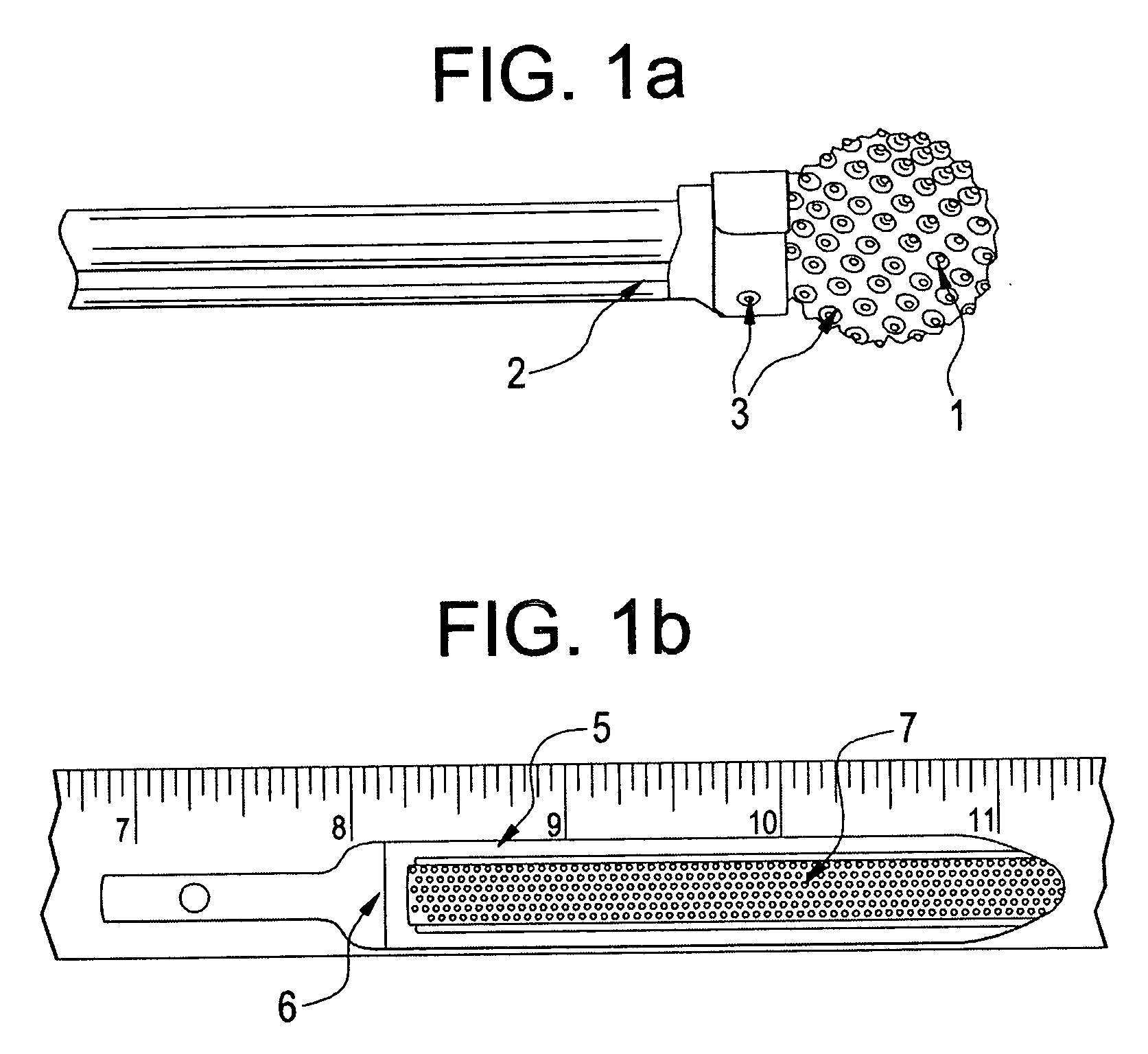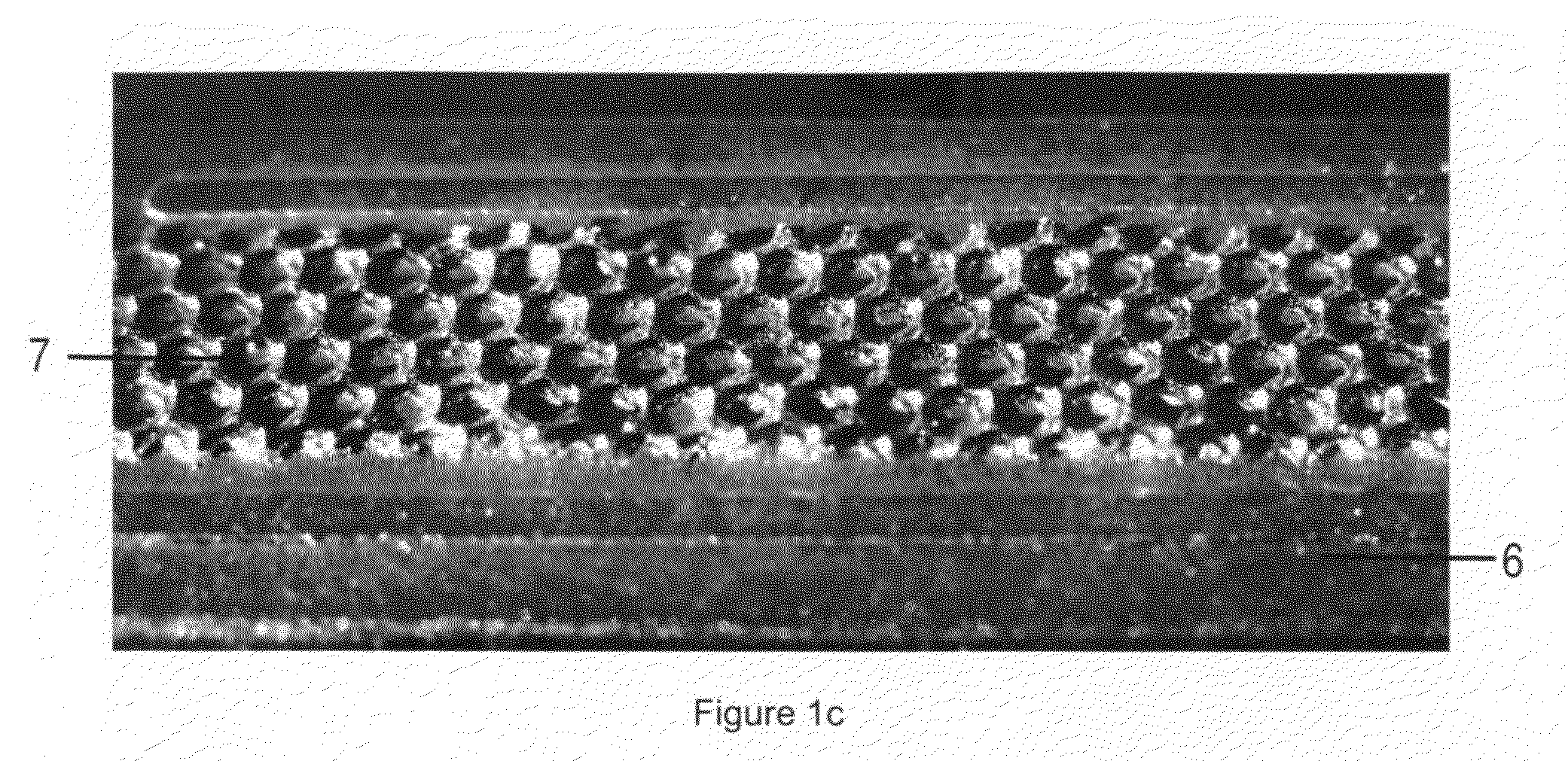Advanced burr, applique for a burr and method of fabricating
a burr and applique technology, applied in the field of advanced burrs and appliques for burrs, can solve the problems of affecting the operation of the operator, affecting the operation of the patient, so as to achieve excellent operation and material removal characteristics, excellent wear resistance and lubricity
- Summary
- Abstract
- Description
- Claims
- Application Information
AI Technical Summary
Benefits of technology
Problems solved by technology
Method used
Image
Examples
Embodiment Construction
[0023]The process of the present invention begins by designing a cutting surface pattern by computer aided design (CAD) as seen in FIGS. 2a-4b. The preferred cutting facet layouts are shown in these figures. Also shown are the protrusions or plateaus and cutting edges that will be present on the final appliqué. Three exemplary designs are described but an unlimited number of designs are possible with various cutting facet sizes, shapes, orientations, spacings, and depths.
[0024]With reference to FIGS. 2a and 2b, a first example of a cutting facet layout in accordance with the teachings of the present invention is shown to include a plurality of protrusions 11 and a plurality of smaller holes 13. As seen in the photomicrograph of FIG. 2b, the protrusions 11 are generally cylindrical at their distal terminations and widen out proximally as they approach the base of the appliqué10. The smaller holes 13 are located such that, as best seen in FIG. 2a, six holes 13 surround each protrusion...
PUM
 Login to View More
Login to View More Abstract
Description
Claims
Application Information
 Login to View More
Login to View More - R&D
- Intellectual Property
- Life Sciences
- Materials
- Tech Scout
- Unparalleled Data Quality
- Higher Quality Content
- 60% Fewer Hallucinations
Browse by: Latest US Patents, China's latest patents, Technical Efficacy Thesaurus, Application Domain, Technology Topic, Popular Technical Reports.
© 2025 PatSnap. All rights reserved.Legal|Privacy policy|Modern Slavery Act Transparency Statement|Sitemap|About US| Contact US: help@patsnap.com



